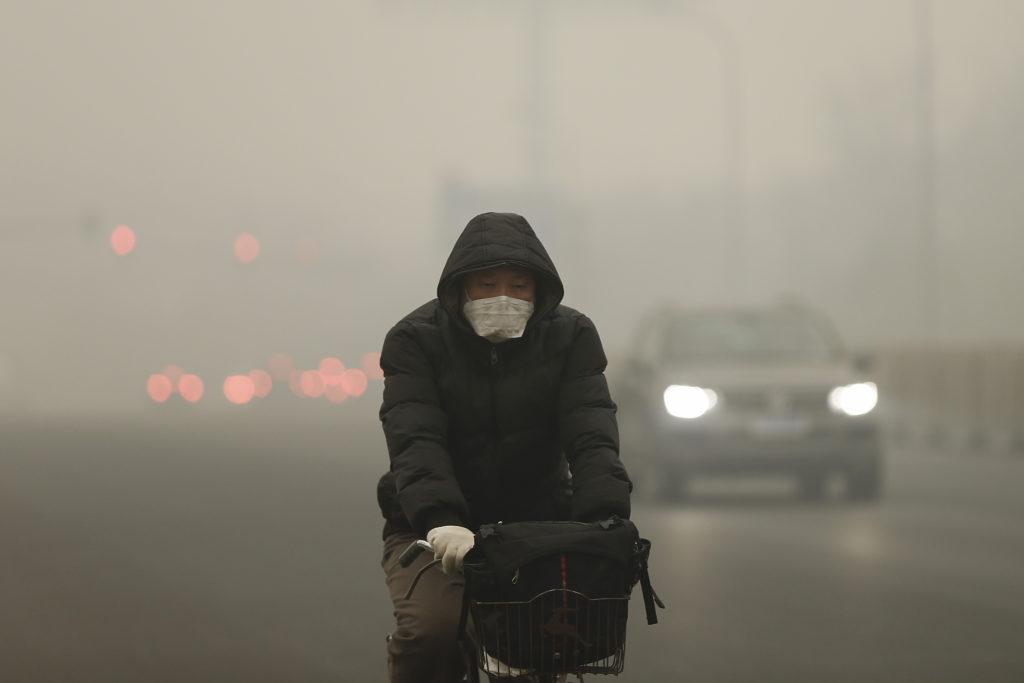
V. Unbreathable Air
A rolling death smog that suffocates millions.
Our lungs need oxygen, but that is only a fraction of what we breathe. The fraction of carbon dioxide is growing: It just crossed 400 parts per million, and high-end estimates extrapolating from current trends suggest it will hit 1,000 ppm by 2100. At that concentration, compared to the air we breathe now, human cognitive ability declines by 21 percent.
Other stuff in the hotter air is even scarier, with small increases in pollution capable of shortening life spans by ten years. The warmer the planet gets, the more ozone forms, and by mid-century, Americans will likely suffer a 70 percent increase in unhealthy ozone smog, the National Center for Atmospheric Research has projected. By 2090, as many as 2 billion people globally will be breathing air above the WHO “safe” level; one paper last month showed that, among other effects, a pregnant mother’s exposure to ozone raises the child’s risk of autism (as much as tenfold, combined with other environmental factors). Which does make you think again about the autism epidemic in West Hollywood.
Already, more than 10,000 people die each day from the small particles emitted from fossil-fuel burning; each year, 339,000 people die from wildfire smoke, in part because climate change has extended forest-fire season (in the U.S., it’s increased by 78 days since 1970). By 2050, according to the U.S. Forest Service, wildfires will be twice as destructive as they are today; in some places, the area burned could grow five-fold. What worries people even more is the effect that would have on emissions, especially when the fires ravage forests arising out of peat. Peat-land fires in Indonesia in 1997, for instance, added to the global CO2 release by up to 40 percent, and more burning only means more warming only means more burning. There is also the terrifying possibility that rain forests like the Amazon, which in 2010 suffered its second “hundred-year drought” in the space of five years, could dry out enough to become vulnerable to these kinds of devastating, rolling forest fires — which would not only expel enormous amounts of carbon into the atmosphere but also shrink the size of the forest. That is especially bad because the Amazon alone provides 20 percent of our oxygen.
Then there are the more familiar forms of pollution. In 2013, melting Arctic ice remodeled Asian weather patterns, depriving industrial China of the natural ventilation systems it had come to depend on, which blanketed much of the country’s north in an unbreathable smog. Literally unbreathable. A metric called the Air Quality Index categorizes the risks and tops out at the 301-to-500 range, warning of “serious aggravation of heart or lung disease and premature mortality in persons with cardiopulmonary disease and the elderly” and, for all others, “serious risk of respiratory effects”; at that level, “everyone should avoid all outdoor exertion.” The Chinese “airpocalypse” of 2013 peaked at what would have been an Air Quality Index of over 800. That year, smog was responsible for a third of all deaths in the country.